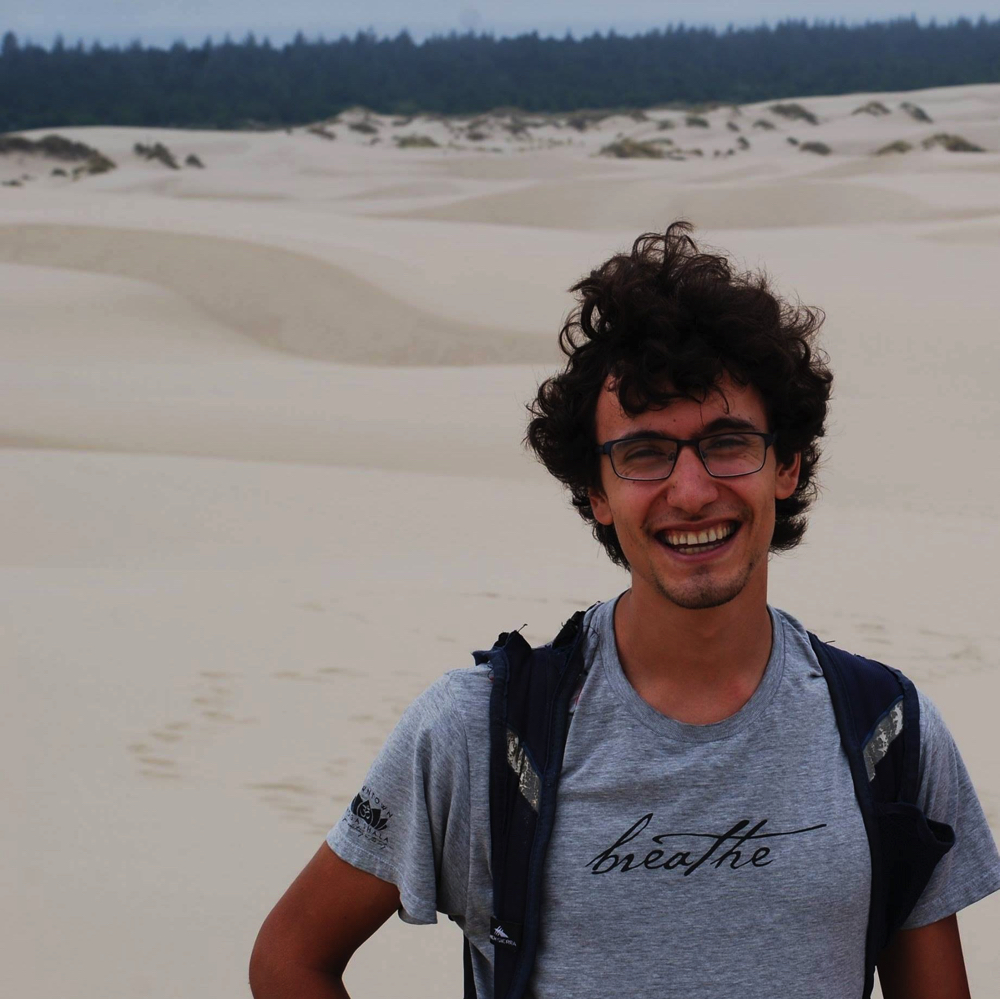Kareem El-Badry smiles as he recites one of his favorite quotes: “It’s not the things you don’t know that hurt you. It’s the things you think you know but just ain’t so.” The paraphrased line, often attributed to Mark Twain, has guided El-Badry’s thinking since he started studying astrophysics as an undergraduate. He’s not the kind of person to stick to what he knows, or what he thinks he knows, anyway.
A junior fellow in Harvard’s Society of Fellows with a Ph.D. in astrophysics from the University of California, Berkeley, El-Badry is an expert on binary stars: systems of two stars that orbit a shared center of gravity. But he is perhaps just as well known for his other role as a notable black-hole debunker. Since 2019, El-Badry has written sixpapers arguing that previously discovered black holes are not, in fact, black holes. Despite the frequent debunking, he doesn’t make enemies of other researchers. “Of course, people would rather not hear their interpretation is wrong,” El-Badry says. “But the community understands we’re all pursing the goal of figuring out these systems.”

Kareem El-Badry
Photograph courtesy of Kareem El-Badry
Raised in Roseburg, Oregon, El-Badry began his undergraduate studies at Yale as a philosophy major in 2012. He knew he liked asking questions “that people have been grappling with for 3,000 years.” Then he took his first couple of astronomy classes and became enthralled with not just the question-asking, but the answer-seeking. He talked to one of his professors about this academic crossroad. “She said to me, ‘In astronomy, if we grappled with the same question for 3,000 years and didn’t make any progress, we’d move on to another question,’” he says, laughing.
El-Badry switched to astronomy shortly after. He sought answers using an approach he learned from philosophy: that everything must be logically proven. “If instead of saying, ‘Is this the most exciting explanation I’m hoping for?’ they said, ‘What is the most plausible explanation?’, many black hole claims would have gone differently.”
The hunt for black holes started decades before El-Badry was born. As he puts it, black holes are “dark and small, and very hard to find,” making their discovery significant.
More than half of the kinds of stars that develop into black holes are in binary systems, formed from the same gas cloud. Many of the black holes that have been discovered thus far are called x-ray binaries: when the larger star in the binary pair dies, what remains after a supernova (when it explodes)—is a black hole. The remaining companion star then orbits the black hole at a close distance without merging. The black hole then essentially, as El-Badry simplifies, “eats” material from the other star, forming a disc that heats up to millions of degrees Kelvin and emits x-rays that certain telescopes can detect. Astronomers have found about 20 in the last 50 years.
What is important, El-Badry emphasizes, is that there are other kinds of binaries where the smaller star may be orbiting a massive object from a greater distance. These are the kinds of systems El-Badry is interested in, and they are much harder to find because they do not produce x-rays. During the last several years, interest in these binaries has grown in the astronomy community, perhaps because gravitational wave experiments have started to regularly detect a related population of merging black holes. Scientists have claimed to detect the first of these wider-binary systems, in which a star orbits an object with greater mass that is presumed to be a dormant black hole, nearly ten times. “They are all announced to big fanfare and a press release,” he says. “But in my opinion, they’ve turned out to be something else.”
According to El-Badry, these presumed dormant black holes are in fact a type of exotic interacting binary star—exotic meaning in an unusual phase of stellar evolution. “In most of these recent discoveries, the companions just turn out to be normal stars,” he explains. “If you look more closely, the star orbiting has a much lower mass than a normal star with similar properties. Based on this assumption, you also underestimate the mass of the thing it’s orbiting, concluding it’s a black hole.”
He acknowledges that his interpretation has not always been correct, and that others have in turn corrected his interpretations: “It’s a great example of the scientific process at work.”
El-Badry has one more year at Harvard before he moves to Caltech, where he will become an assistant professor in 2023. Twain’s words will continue to guide him as he moves back out West. “I try to keep a full inventory of things I don’t know,” he says. “I hope it moves me toward the truth.”









